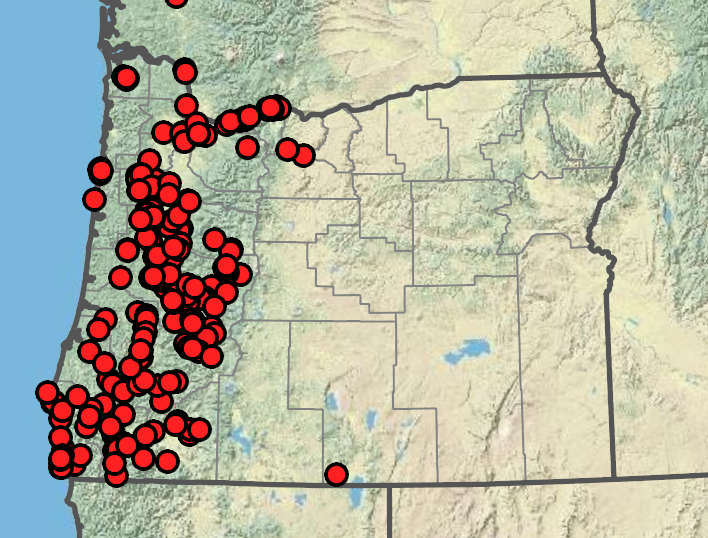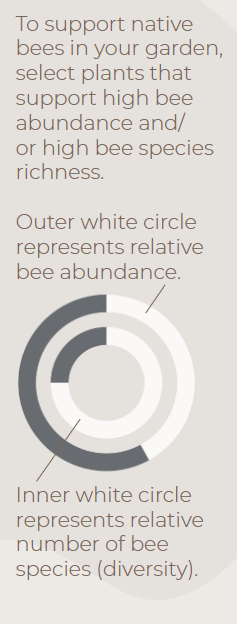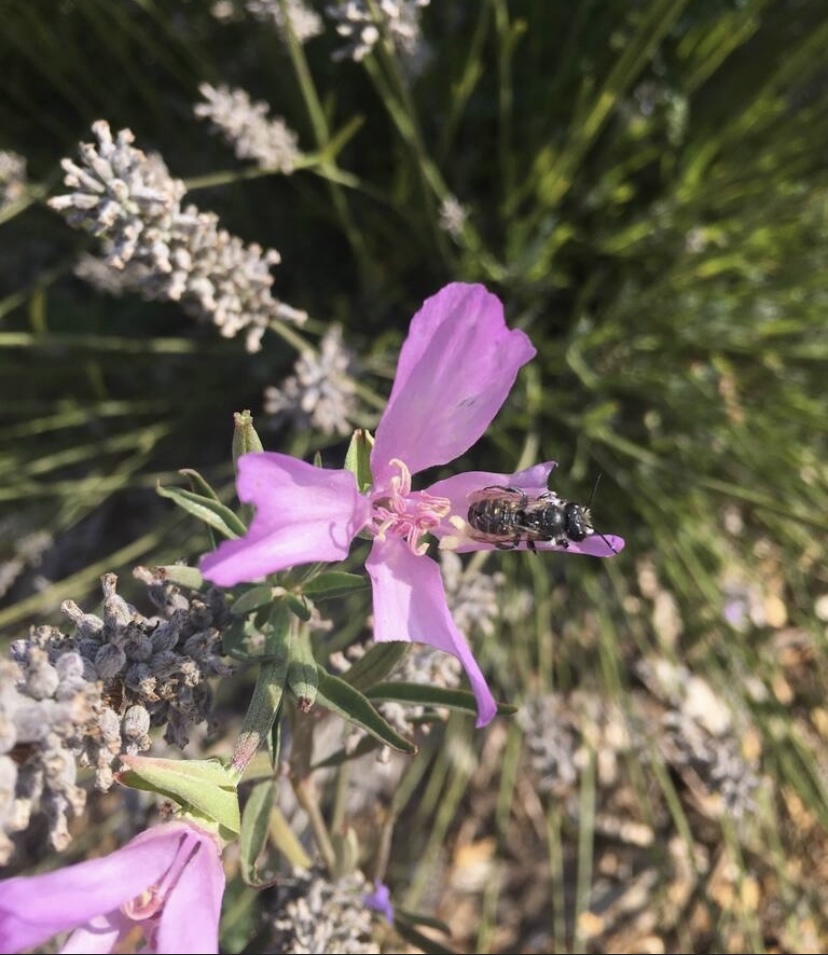The Garden Ecology Lab’s Pollinator Plant PR Campaign Presents….. Farewell-to-Spring!
The Garden Ecology Lab is releasing a series of plant profiles of the top 10 Oregon native plants for pollinators, based on Aaron Anderson’s 2017-2019 field trials of 23 Oregon native plants. We will feature one plant per week for 10 weeks, this is week 7! Profiles will include photos, planting information, and will highlight common pollinators of each plant.

Plant Facts
- Scientific Name: Clarkia amoena
- Life Cycle: Annual
- Growth Habit: Upright, clumping
- Bloom Duration: June – September
- Hardiness Zone: 1-11
- Special Traits: Drought tolerant, deer resistant
- When to plant: For best results, direct seed in Fall or early Spring. Seeds can also be sown in containers or cold frames in the winter.
Pollinator Facts
- Farewell-to-Spring was found to be associated with Megachile brevis, a species of leafcutter bee.
- Other common bee visitors include long-horned bees of the genus Eucerini and other species of leafcutter bees.
- Farewell-to-Spring also hosts some butterflies and moths including the White-Lined Sphinx, Pacific Green Sphinx Moth, and Clark’s Day Sphinx Moth.
- Farewell-to-Spring provides both nectar and pollen to its insect visitors.
- Although pollen is easily accessed on the protruding stamen, bees must dive into the flower to reach the nectar that is produced beneath the petals. This is because nectar is produced at the base of the ovary, and Farewell-to-Spring has an “inferior ovary” meaning the ovary is positioned below the sepals and petals.


some rights reserved
Farewell-to-Spring’s Native Range in Oregon

Farewell-to-Spring is found throughout Western Oregon from the Coast through the Cascades. Oregon is home to 4 subspecies of Clarkia amoena. Maps and legend acquired from the Oregon Flora Project, with Imagery Sourced from Google. Copyright 2021© TerraMetrics
Farewell-to-Spring as a pollinator plant
Farewell-to-Spring hosts a moderate abundance of bee visitors, but the diversity of bees it hosts is among the highest found in the study! With a long flowering season, Farewell-to-Spring blooms when spring wildflowers are beginning to turn brown. Bloom duration can be lengthened by occasional watering over the summer, although Farewell-to-Spring are drought-tolerant and survive with minimal summer irrigation. This flower is an annual, but will reseed itself readily.


Infographics developed by LeAnn Locher, Aaron Anderson, and Gail Langellotto.
Abundance Calculations. Bee abundance was calculated using estimated marginal means of bee visitation to each of our study plants from 5-minute observations conducted from Aaron’s 2017-2019 field seasons. Estimated marginal means (EM Means) were assigned to categorical values and averaged across years to yield the following categories: 0% = Very Low =EM mean below 0.49; 25% = Low = EM mean of 0.50 to 0.99; 50% = Moderate = EM mean of 1 to 1.49; 75% = High = EM mean of 1.50 to 1.99; and 100% = Very high = EM mean above 2.0.
Diversity Calculations. Bee diversity was based on the total sum of species collected on each of our study plants from 2017 to 2019. A Chao 2 Estimator was used to estimate total expected species richness for each plant; Chao 2 estimates were then used to create categorical values, as follows: 0% = Very Low = 9.99 or lower; 25% = Low = 10 to 14.99; 50% = Moderate = 15 to 19.99; 75% = High = 20 to 24.99; 100% = Very high = 25 or higher.

Did you know?
Leaf cutters forage for pollen, nectar, and one more surprising resource: petal clippings! Using their mandibles, the bees cut out a piece of a petal (often in the shape of a crescent), clasp the piece of petal under their abdomens, and fly away to use the petal as building material in their nests. If you keep a mason bee or leafcutter bee house in your yard and grow Farewell-to-Spring, look for nest holes that are plugged with pink petals instead of mud or leaves.
The tips of some of this flower’s petals have been harvested from by leafcutter bees:
Leafcutters in Action
In each of Jen’s two field seasons, she has set a challenge for student technicians: obtain a video of a leafcutter harvesting a piece of petal from Clarkia. Students that win the challenge are rewarded with baked goods!! This past summer, Mallory succeeded in capturing not one, but two videos of leafcutters in action (below). Leafcutters can be particularly difficult to capture on video because they cut the petal pieces very quickly, and often fly even faster! If you have Clarkia growing in your garden, look to see if your flowers bear any crescent-shaped cuts. If they do, you too might be able to spot some special bees flying away with their floral confetti.
Videos by Mallory Mead, summer 2021.
Photos from the field
Tune in next week for the next edition of our Pollinator Plant PR Campaign.








